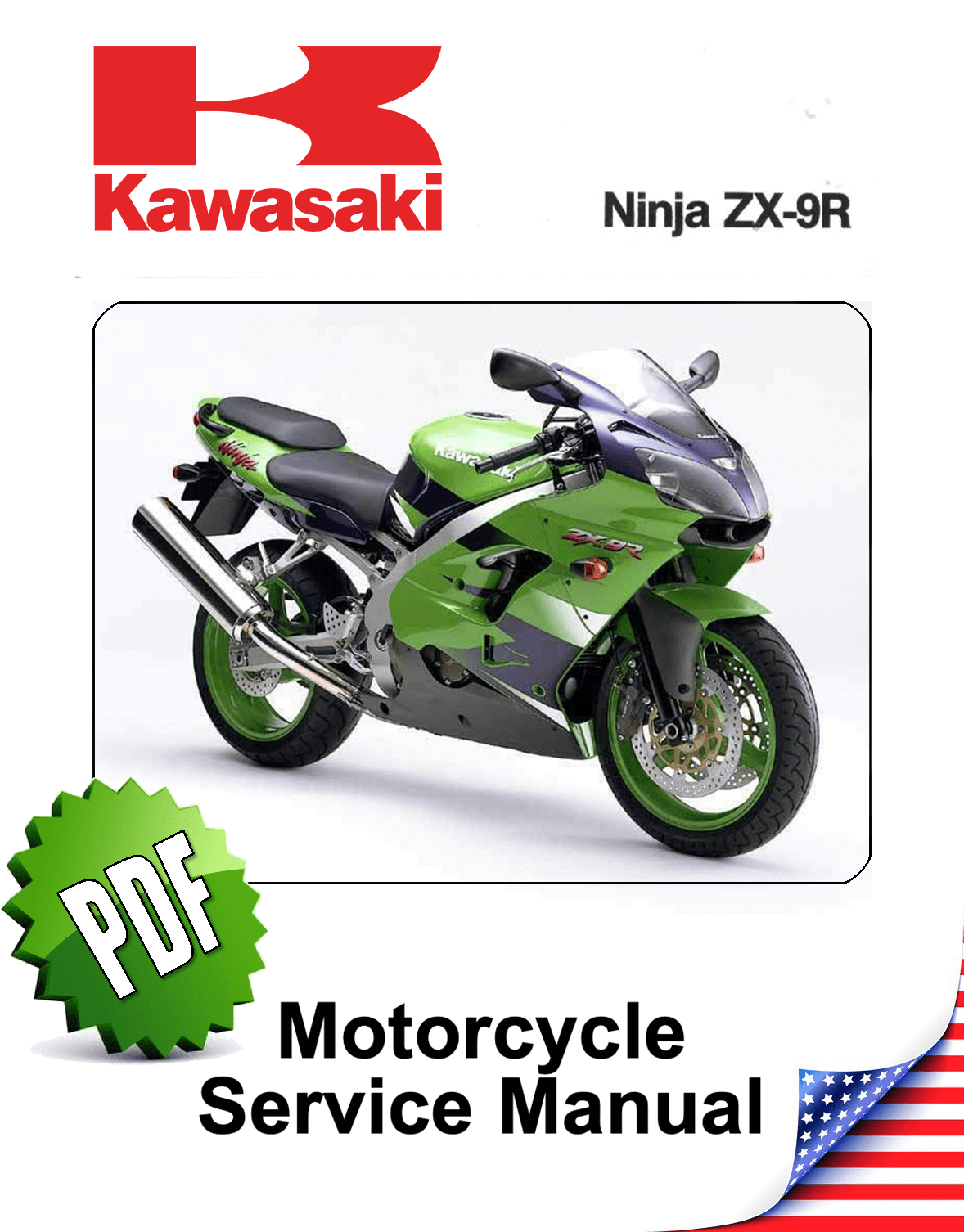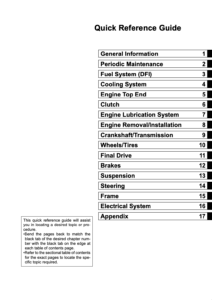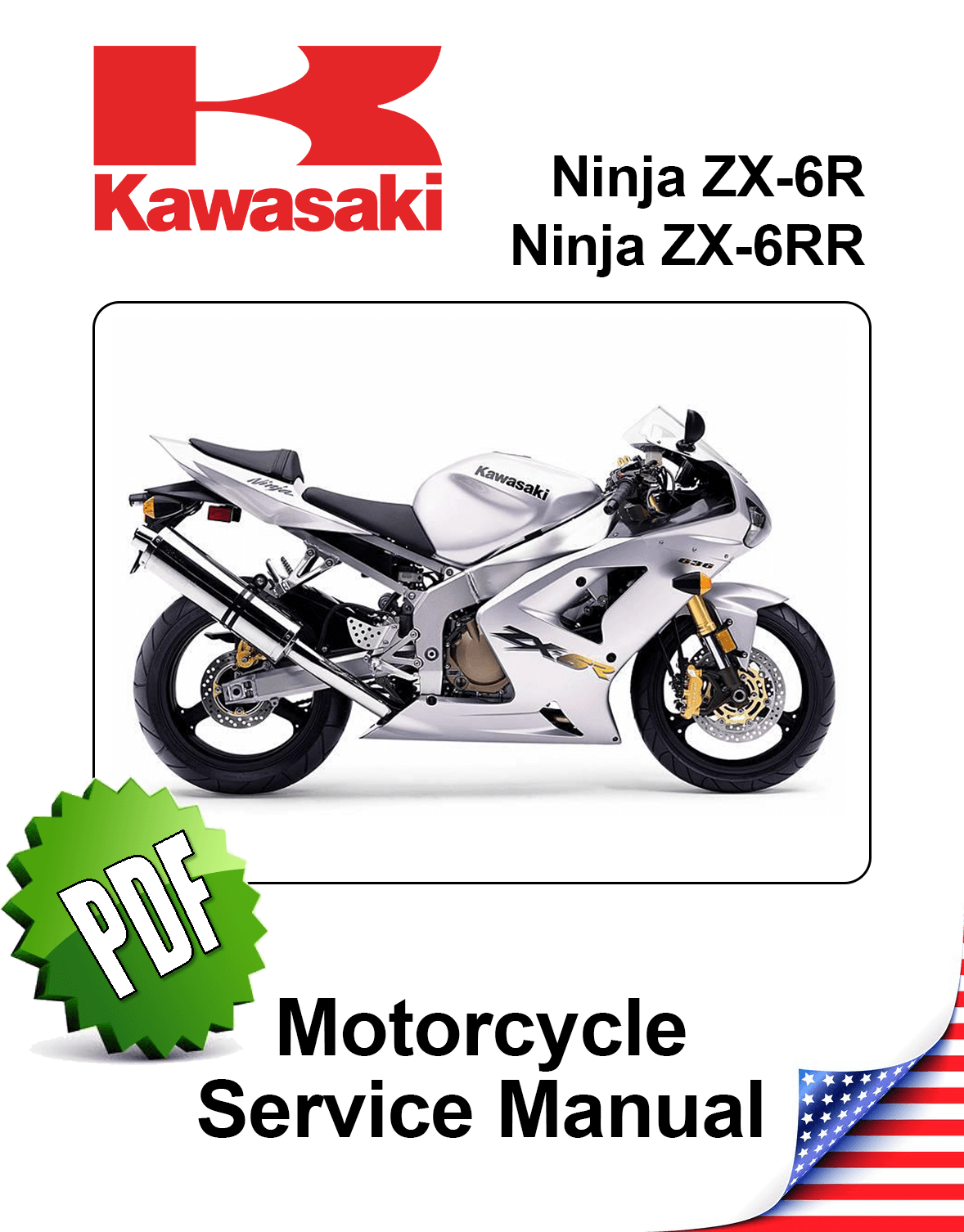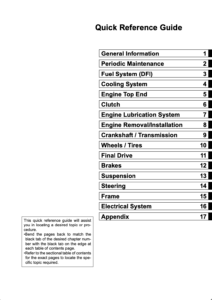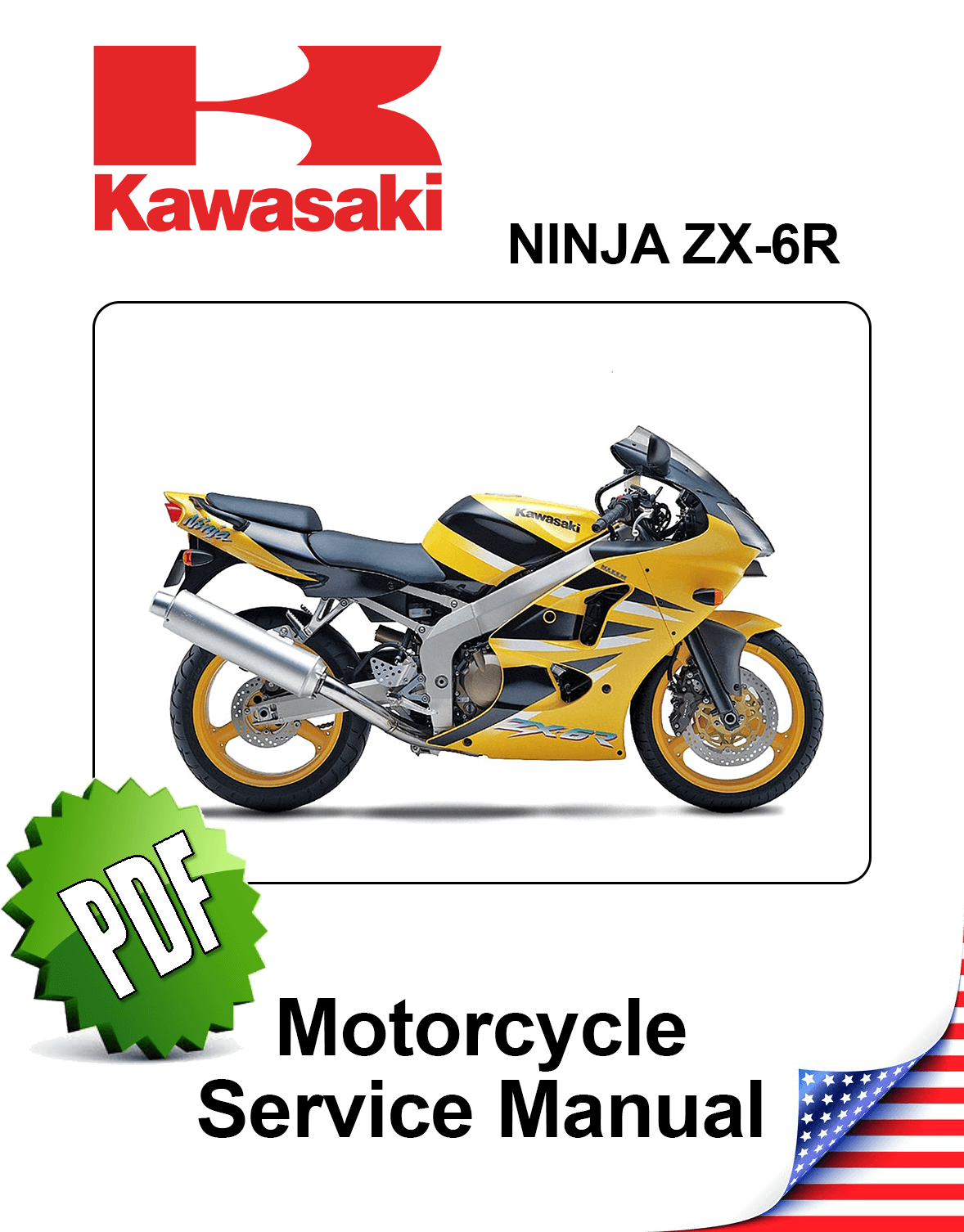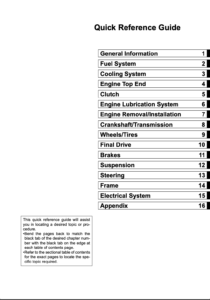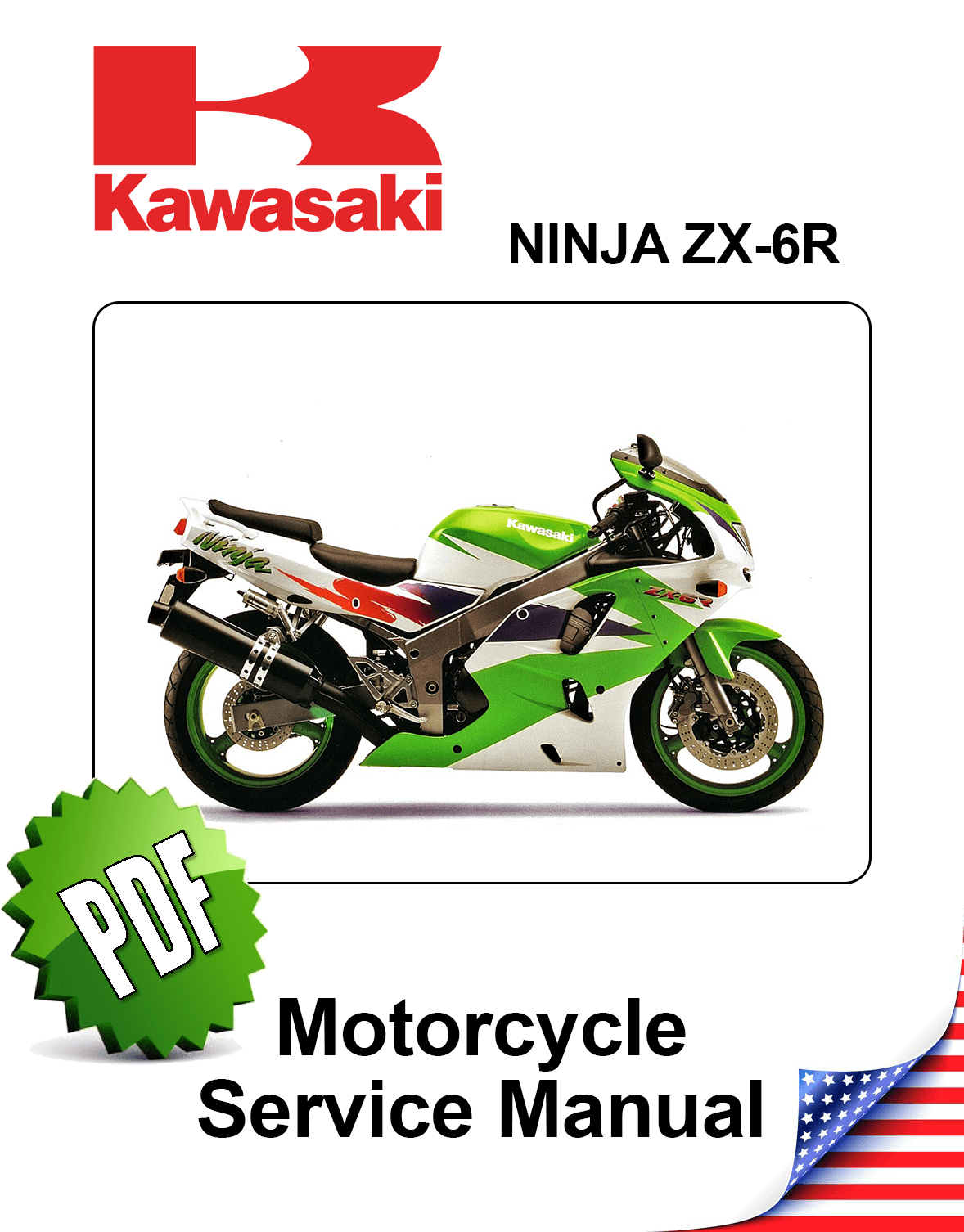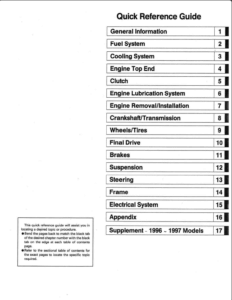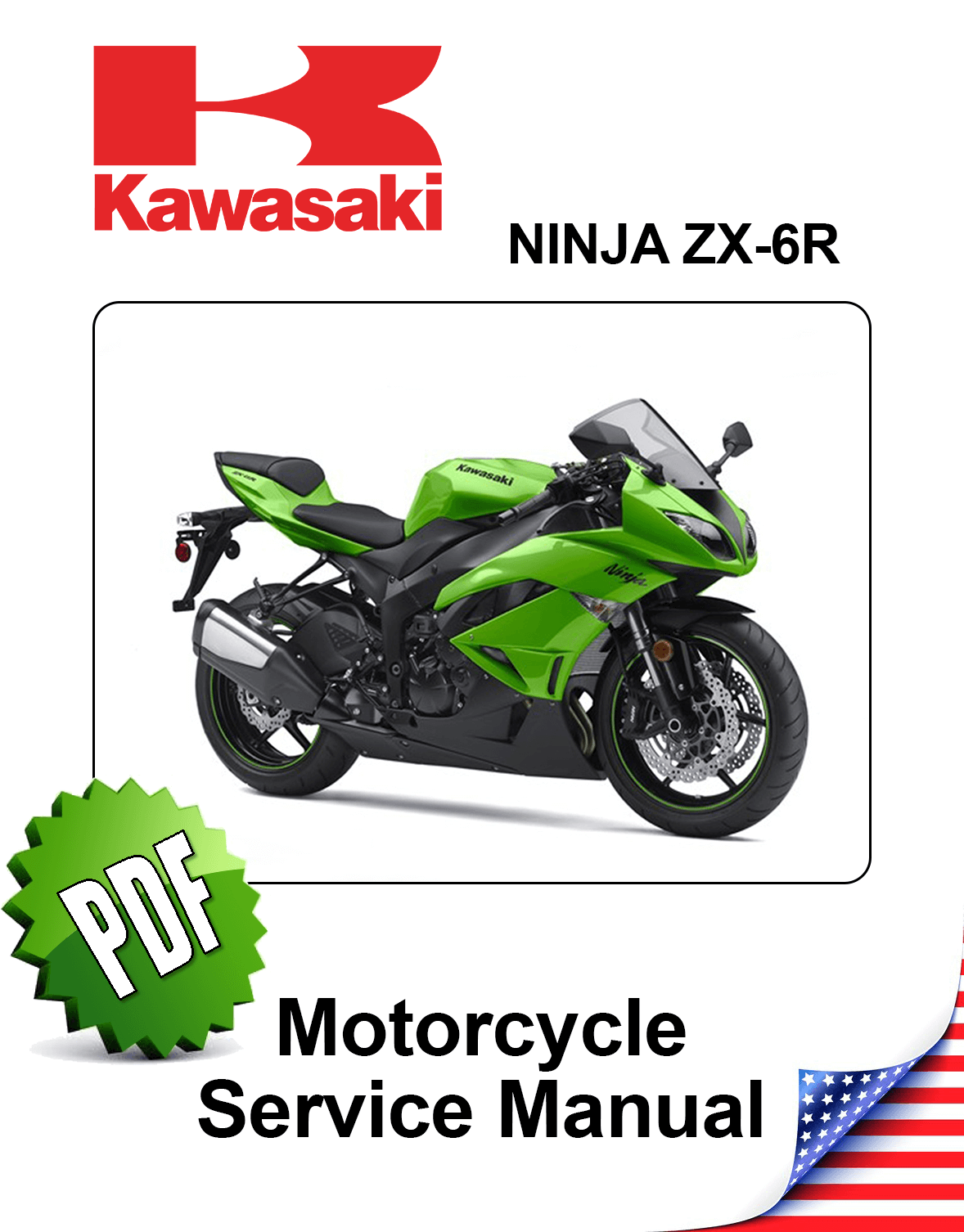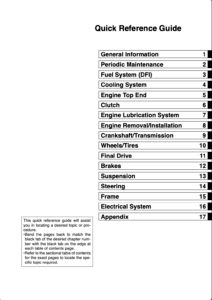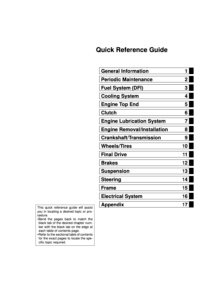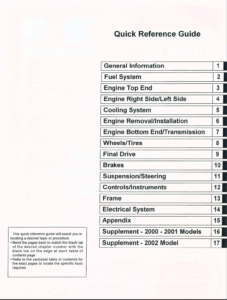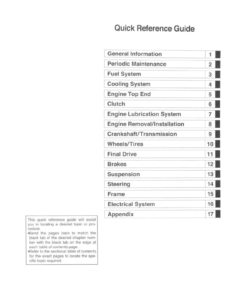Complete PDF version of the Service Manual for the Kawasaki Ninja ZX9R C. A MUST for every Ninja ZX9R owner.
Download: Immediately after payment!
OEM Original factory workshop manual.
Models covered by this manual: 1998 to 1999
Number of pages: 307 pages
Table of contents:

This PDF repair manual can be downloaded right after the payment process in complete, on the device of your choice.
We do not offer printed manuals, for the following reasons:
- it is more eco-friendly to use a digital version
- your manual never gets dirty or greasy
- you can always choose to print the specific page(s) you need to work on your bike
- you receive your manual immediately after payment
- it is searchable
Kawasaki Ninja ZX9R
In reaction to Honda’s release of the CBR900RR Fireblade for the 1992 model year, Kawasaki created the model. Large-capacity Japanese sporting bikes had been polarized before to the introduction of the Fireblade. On one side, there were the 750cc sport bikes, which were influenced by Endurance racing and the World Superbike Championship. On the other hand, the “big-bore” 1,000 cc-plus sports-tourers had evolved naturally from the performance bikes of the previous 20 years. In a nutshell, the 750s had the handling, while the big-bores had the power. Kawasaki dominated in both categories.
The ZXR750 offered the technology and performance of ultra-expensive racing-homologation models from Honda and Yamaha for half the price, and it outperformed the similarly priced GSX-R750 of the time, which still featured a perimeter frame and an oil-cooled engine, while the ZZ-R1100 was the fastest production motorcycle on the planet.
The Fireblade was built around a 900cc engine and a 750cc sport bike frame. It blended big-bore power with sport bike maneuverability, but more importantly, it was the first to pay close attention to weight-saving design. The Fireblade not only outperformed the 750s in terms of power, but it was also substantially lighter. When Kawasaki set out to construct their Fireblade-beater, they ignored or underrated this feature. Rather than commit to an altogether new design, Kawasaki blended their class-leading big-bore, the ZZR1100, with their class-leading 750, the ZXR750, to create the first ZX-9R.
The result was a large motorbike; despite weight-saving techniques like as magnesium engine covers, its claimed dry weight was 215 kg (474 lb), over 30 kg (66 lb) more than the Fireblade. It produced roughly 125 horsepower (93 kW), which was between 10 and 15 hp (11 kW) more than the Fireblade, but this power advantage did not compensate for its size, weight, and inferior agility. Instead of being a direct competition, the ZX-9R was kept as a more stable and pleasant alternative to the Honda, with higher straight-line speed. The higher clipons and more upright sitting placements indicate a road-going orientation.
Models history
ZX900C1 (1998) and ZX900C2 (1999)
Everything else was brand new, save for the engine size, stroke, and redline. The hydraulic clutch was replaced with a cable-operated clutch. The generator was relocated from behind the cylinder to the more traditional placement at the crank’s left end. There was no longer a balancing shaft. The valvetrain was converted to direct valve actuation, and the cylinder head was plumbed for plug-top ignition coils, which replaced more traditional remote coils and high-tension leads. The new engine also has a Hall-type cam position sensor on the exhaust camshaft. Cam position sensors are commonly utilized in combination with electronic fuel injection systems.
Because the ZX900C used Keihin 40 mm CVKD carburettors for induction, a cam position sensor was not required. Its presence might imply that Kawasaki had plans to incorporate fuel injection into the engine in the future. This first happened on Kawasaki’s first fuel-injected sport bike since the 1981–1985 GPZ1100, the 2000 ZX-12R. However, this did not occur on this engine until the 2003 release of the Z1000, which employs a bored-out ex-ZX-9R engine.
The steel engine cradles were gone, but so was the bolt-on subframe and the rear ride height adjustment. The swingarm featured a revolutionary unbraced extruded rectangular-section design. The wheel diameters remained the same, but the wheels were of a newer, lighter design. The brake calipers remained, but the discs were smaller and lighter without affecting stopping power. The rear shock absorber was replaced with a lighter, more compact piggyback design, replacing a remote reservoir. The wheelbase shrank by 30 mm to 1,410 mm (56 in).
On the B model, new 46 mm right-side-up KYB forks replaced the heavier, but firmer, 43 mm upside down forks. Some European testers complained about the front forks fluttering during strong driving, a problem that was only resolved with the 2002 model.
Overall, the C-model weighed less fully fueled than the initial B-model, with a factory-quoted dry weight of 183 kg (403 lb).
The new bike preserved the rounded appearance of its predecessor while being sleeker, with a thinner tail unit and a smaller fairing. However, as a result of the smaller engine and shorter wheelbase, the fuel tank grew broader and intruded more on the riding posture than previously.
Source: Wikipedia

